Saving forests while eradicating poverty with Hilary Pennington and Gita Syahrani

Transcript
HILARY PENNINGTON: Welcome, and thank you for joining us for the second conversation in the live “On What Matters” series. I’m Hilary Pennington, executive vice president of the Ford Foundation. I’m a white woman with short blond hair in a blue dress, and I’m sitting before a white wall in a brown chair. My guest today is an amazing environmental activist, Gita Syahrani. And, Gita, let me turn to you to introduce yourself.
GITA SYAHRANI: Hi, everyone. Hi, Hilary. My name is Gita Syahrani. You can call me Gita. I come from Indonesia. I’m an Indonesian woman. I am the head of the Secretariat for Sustainable Districts Association. Or, in Indonesia, we say Lingkar Temu Kabupaten Lestari, or LTKL. I am, right now, sitting in our office in Jakarta and I’m wearing a deforestation-free dress, sitting against a back wall entitled with our slogan, which is how to work collaboratively as a multi-stakeholder coalition.
HILARY PENNINGTON: Let’s get started. We’re going to see a brief video that will give people a sense of the work you do.
LTKL VIDEO: Peat is a global treasure. It has the potential to become the world’s greatest carbon storage. But if you don’t take care of it, it might also become the world’s greatest threat, especially when it’s caught on fire. An immune system has also become one of the world’s most pressing needs, especially during the pandemic and even afterwards. Alam Siak Lestari is a local company located in Siak, Indonesia, home to the second-largest peat area of the world. We are discovering new ways to link peat conservation and community-based business to boost the world’s immune system. Inspired by local tradition for a post-surgery remedy, ASL have discovered the potential to use low-temperature distillation methods and create albumin extract from snakehead fish that is cultivated directly in peat conservation and fire-prone areas. Now, this is an innovative way to actually use existing technology combined with local tradition, allowing village communities living within and surrounding the peat area to access the technology and use the technology to actually build business and produce high-quality, value-added product. Globally, the market value of albumin has reached $6.5 billion in 2026. Now, ASL is on track to prove our business model by securing pre-investment, including directly from the village community, and have also secured a long-term contract with a health supplement company. Now, we invite you to become our collaborator in research and development, as well as opening up the global market access. By doing so, you are joining us on a journey to answer the world’s greatest question: “Can you really earn money by protecting the environment?” The answer is definitely “yes.”
HILARY PENNINGTON: Oh, thank you for that, and let’s get started with the first question. You know, I think it’s fair to say that most people understand that there is climate change. They don’t have very clear ideas about what to do to address it, and you have a very, very particular and strategic approach. Can you talk a little bit about how you come at this work, why you do it, and how you do it?
GITA SYAHRANI: So, in Indonesia, we have this principle that is actually based on our founding fathers, which is called “gotong royong.” And gotong royong means working collaboratively across different backgrounds, across different cultures, across different religious affiliations, and across different races for one shared goal. And gotong royong has fundamentally shifted the way that we are doing things in the Districts Association. We start from addressing complex problems. For example, the peat fire that was explained in the video through a silo manner. The private sector would be doing one thing, the government would be doing another thing, the community would be doing another thing. Everybody is pushing towards betterment of the current condition. However, if we were united and practiced this essence of Indonesia, which is gotong royong, actually, the impact can be greater. So our main focus in LTKL, in the Sustainable Districts Association, is to prove that Indonesians, especially at the district level, are still practicing the value of gotong royong actively every day to combat and address complex problems such as sustainable land use and fighting the climate crisis. This is the essence of what we are trying to conduct, and we are trying to also build a recipe, so to speak, so that the way to do this gotong royong, or collective actions in English, are replicable, not only within the district, but also nationwide. And hopefully, it can also influence people outside of Indonesia to try to practice the same thing, as well.
HILARY PENNINGTON: When you approach that, how do you shape the invitation to the different actors in a way that helps them see how much they have to benefit by doing things together? And what’s hardest about that approach?
GITA SYAHRANI: I think a lot of the process that we do with our district members is identifying the common narrative. That’s the goal first. So, even before we share this invite of, like, let’s work together, we have to figure out—and usually we use, like, different tools, including an empathy map, for example, to figure out what’s in it for each of the stakeholders, because everybody has different type of interests and everybody would need a value proposition for them to actually push towards something. So, usually, the first three to six months, what we do within our districts is identifying the common narrative. For example, in the district of Siak in Riau, we tried to talk to all of the stakeholders and figure it out. Actually, the common narrative that everybody wants to do is to prevent fire from happening. So that’s one. The second one is they also want to uplift the welfare of people within the district itself through sustainable business. And using those two common narratives, we ended up getting together with all of the stakeholders and inviting them into a process where, at the end of the day, leads to innovation center, an actual sustainable business that’s supported by different stakeholders, and we also are providing support to the government-led initiative, the Green Siak vision. I guess when it comes to process, you start from identifying the common narrative and then you start building value proposition for different stakeholders. Once you have that mapped out, then you try to convene the process. If you do it backwards, you run the risk of making conflict and tension even worse than before, because you’re forcing everybody to work together without them realizing that, actually, this is something that they should automatically do, because it’s beneficial. And the third, to close it out, usually we would try to figure out some concrete examples that they can use to compare. What does it mean to work separately? What are the results? And if you were to work together, then what are the results and how is it better than the one that you did before?
HILARY PENNINGTON: I love that close-out loop that you do. That’s really a brilliant approach. And, you know, part of what you are talking about is, of course, the importance of understanding the context and relationships. And I think that’s one reason why you’ve chosen to focus at the district level. But can you talk a little bit about how and why focusing in a place also lets you have impact beyond that place?
GITA SYAHRANI: Just to give a bit of context, the districts have provided me with the opportunity because they were the ones that created this association in the spirit of actually getting together and agreeing on a pathway that they can use to transform their jurisdictions into a place where they can answer this mystery question, which is, “Can you actually have a development pathway that balances protecting important ecosystems versus eradicating poverty and uplifting welfare of their people?” Because right now, the statistic is showing that in areas where forests and peat and important ecosystems are protected, poverty levels are also high. So they want to prove the theory backwards. They want to prove that, actually, if you choose this type of development pathway, you can have more people prosper in your jurisdictions but, at the same time, guard your forest and peat as well. So it started from their initiative, and I was fortunate enough to be provided this opportunity to become a convener and support them in this mission. And the reason why a district becomes an exciting thing for me personally, my background is legal, and I was involved in public policy at the national level before. The national level would always need implementation at the subnational for any type of policy and regulatory framework that gets issued. And in Indonesia, the district level becomes very fundamental, especially when you talk about deforestation and land use because it’s happening within that territory and a lot of the licenses for plantations, for mining, that get issued are located within this jurisdiction. So any type of impact, be it environmental, social, or economic, is felt, first and foremost, by people within that jurisdiction. So I feel very blessed to be provided with this opportunity to work with the district governments that are already committed. And I believe if we focus on one particular place and actually showcase how collective action can really be tangible, people would go automatically to this mindset of “seeing is believing.” You need to see something that is very tangible. How is this gotong royong, or this collective action, translated? We can showcase that one district at a time, but if we manage to get it right, then this can influence nationwide movement and hopefully inspire more districts to influence their provinces and, at the end, actually say to the national government, “We are your warriors to implement your national targets and your national programs. We are here to contribute to the way that you want to achieve low carbon development or reduce emission. We are here to serve you, and we have proof that this can work, actually.” That’s why it’s exciting for me.
HILARY PENNINGTON: You know, I think that—I understand why that’s exciting for you. And let’s just double-click on that because you have just described a solution to, I think, one of the big barriers that gets politics around this issue stuck, which is that it is so easy to create a narrative that puts, you know, people’s livelihoods and their jobs against protecting the environment. And that is—that’s everywhere. It’s really easy for people to believe that, and it’s really hard to combat it. So you’re really talking about how, from the bottom up, to create a political will and also an evidence base. What will it take for the story of that to kind of go viral? What do you think?
GITA SYAHRANI: So, the way that we are conducting our support at the Secretariat Association is actually in parallel. Yes, we are helping districts build models that can be an inspiration. We have this theory called success stories-based policymaking, which is you create a success story that inspires better policymaking because then you know that it works. But that’s, as you mentioned, that’s coming from the bottom up. The way that the video was playing, we managed to help youth from Siak District create the first community-based enterprise that is actually providing nature-based solutions and sustainable products that got international recognition. They just won an award at M.I.T., for example. And that’s the reason why policymakers think that this is something that is worth pursuing, and they want to replicate it so that there’s more companies like that within their district. But in parallel, we also work with multiple national line ministries. We work with the Ministry of Home Affairs. We work with also—fundamentally link ministries with district governance. For example, the Ministry of Finance, the Ministry of Planning, Ministry of Investment. And the reason why we work with the national stakeholders is within the process itself, is the same thing as your first question. How can we also identify the common narrative from their side and how can we start showcasing to them that what we’re doing at the bottom up is actually answering the stuff that they’re looking for as a solution and as a showcase that the national policy can actually be done. So we can do one thing, but we can frame it differently so that at the end of the day, it answers a different narrative for each of the stakeholders so they feel that this is also their journey.
HILARY PENNINGTON: It is so inspiring, the way that you work. And I want to ask you a question I’m going to try to ask everyone, which is, you know, you are up against huge forces, you know? A world which does not take climate change seriously enough, a dominant model of the economy, you know, that favors extraction over all of the kinds of things you’re talking about. So, just in our last minute together, before we go to Q&A, what gives you hope?
GITA SYAHRANI: I think the interaction day in and day out. We cannot only be fixated with the long-term goal that we’re chasing, which is, at the end of the day, sustainable land use and creating districts that are able to showcase this model of collective actions. That’s the long-term game. But my reason to be hopeful is that every day I wake up and I go to work and I see progress within each of the stakeholders. Policymakers that before were not open to working with youth are now partnering intensively, for example. We have instances where district leaders that didn’t talk about sustainable forest management start talking about it publicly. So we do have this type of, like, you can call “small wins,” if you look at it in relative terms. But, for us, it’s actually big wins because we’re working in a behavior-change kind of mindset, which requires a long-term marathon. So we have to celebrate everyday progress, and this is something that we do in our office, as well, practicing gratitude. So we would write down things that we think are progress every week, and then we take turns to discuss so that at the end, we don’t forget that even if the journey is long, we do have progress every single day.
HILARY PENNINGTON: Thank you for that. And I think that’s a practice that everyone who’s listening to this could do well to do individually, but also together. I love that you do that together as a community of changemakers. So we’re going to go to Q&A, and we probably have time for about three questions. We have so many more that have come in. So we’ll try to figure out a way to be responsive to people through social media. But the first question comes from the Kayunga Community Club: “How do you generate climate change awareness in rural areas?”
GITA SYAHRANI: So, for example, our recent work in several of the districts that work directly with small and medium-scale enterprises—most likely, it’s ultra micro to micro, this also in collaboration with the Ford Foundation and Climate and Land Use Alliance. We don’t talk about climate change using the words “climate change.” Instead, we focus on what they think and consider as risks for their business, which are disaster and also health reasons. So a lot of the entrepreneurs are women.
HILARY PENNINGTON: Of course.
GITA SYAHRANI: Every time we talk about something—yeah! [laughs] Something that is good or bad for their kids, for example, the way that the waters that are being polluted, or the way that the air quality is bad, and the way that the soil is not absorbing as much nutrients as it should, and it affects the growth of the kids. They get really passionate about it. So instead of being fixated on the terminology of “climate change,” we can say that we are here to help you build a more disaster-resilient business. We are here to get you to be part of a solution for something, because you are guarding the quality of soil, guarding the quality of water, guarding the quality of air. So, in rural areas, what needs to be done is making sure that you are addressing what is it that they need, what is it that they consider as risk? Because, for rural communities, at least the ones that we are working with, usually it’s a matter of life and death, literally, and what do they eat tomorrow. And it’s immediate, concrete things that they want to work on. So you also have to really be providing tangible solutions that are relatable for them and not only theoretical.
HILARY PENNINGTON: And our next question comes from another Gita, Gita Putri: “Does the current status of civic space provide the necessary environment for LTKL to reach their objectives?”
GITA SYAHRANI: So, Gita Putri is also one of our partners that is helping us out a lot with policy works under her PSHK organization. So one of the core components, actually, when it comes to the solution that LTKL is trying to convene—again, the Secretariat does not come up with the solution. It’s actually the community of partners that comes up with the solution. And the majority of those partners are actually civil society organizations and development partners, and they are very critical when it comes to actually providing a solution, a real solution, and also technical assistance. But at the same time, they’re also very productive when it comes to doing their function in terms of monitoring and making sure that the districts are doing a good job, so to speak, making sure that this is something that they can also be accountable for. So, right now, what we see is that if we look at collective actions and we want to improve sustainable land use within a district or within a jurisdiction in Indonesia, at least, there is no way that we can achieve that without the support of civil society organizations and development partners. Right now, we are experiencing, at least at the national level, a shrinking space for civil society to actually provide solutions. But I would say that there is still room to actually start proving the business case of having civil society and development partners as a core solution at the jurisdiction level. So we work with several partners to actually showcase how this collective action that is driven by civil society and facilitated by government is actually the success story that we are looking for in terms of climate resiliency. The journey now is how to communicate that almost loud enough so that this resonates also to decisionmakers across the country, including the national level.
HILARY PENNINGTON: Well, so now—thank you.. And we have time for one last question, a short period of time for a huge and really interesting question: “How does LTKL involve any religious actors in environmental efforts given their importance to peace-building and to sustainability?”
GITA SYAHRANI: Thank you, Janie. In a lot of the districts that we’re working with, religious actors play a very huge role. I’m going to give you one example that is interconnecting environmental effort, emergency effort, and religious actors, which is the collaborative vaccination program that we did as a rapid response for COVID in collaboration, also, with partners of the Ford Foundation. And the vaccine is actually targeting a marginal community, including Indigenous community farmers and smallholders, as well as people with disability. And for one particular vaccine site that are targeted for a community that is actually the Guardians of the Forests because they’re part of Indigenous groups, this type of vaccine is actually still being questioned due to the new type of innovation that it uses. So, what we did, was to work with the local church organizations and also local Islamic organizations to make sure that we encapsulate their testimony so that they start also promoting the need to take care of others. So you vaccinate yourself not only to take care of you, but also to take care of each other, because that is what your religion is telling you to do. And based on this testimony, we actually managed to vaccinate a lot of the community that wasn’t open to it before. And at the same time, we enabled them to keep their current role to being this buffer community and keep protecting the forest and the peat that’s very important also to their livelihood by keeping themselves healthy. So everything is interlinked and intertwined. Thank you for the question.
HILARY PENNINGTON: Well, thank you. It has been such a privilege and a pleasure to get to speak with you and to hear about your work and, most importantly, just the philosophy that runs through everything that you do. I want to thank you. We’re at the end of our time. I want to thank those of you who have joined to listen to this. There will be more conversations coming up with other amazing social justice leaders. Gita, I cannot thank you enough for today.
GITA SYAHRANI: Thank you so much for having me. And hopefully, you get to visit Indonesia soon. Help us spread the word even more on collective actions to protect our important ecosystems while uplifting the welfare of everyone.
HILARY PENNINGTON: Absolutely, absolutely. Thank you.
Accessibility Statement
- All videos produced by the Ford Foundation since 2020 include captions and downloadable transcripts. For videos where visuals require additional understanding, we offer audio-described versions.
- We are continuing to make videos produced prior to 2020 accessible.
- Videos from third-party sources (those not produced by the Ford Foundation) may not have captions, accessible transcripts, or audio descriptions.
- To improve accessibility beyond our site, we’ve created a free video accessibility WordPress plug-in.
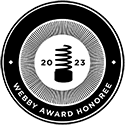
Welcome to “On What Matters,” a conversation series between our executive vice president Hilary Pennington and social justice leaders on the frontlines of change.
This episode features Gita Syahrani, Head of Secretariat at Lingkar Temu Kabupaten Lestari (LTKL) / Sustainable Districts Association in Indonesia.
Gita talks with Hilary about her work preserving and restoring forests in Indonesia and creating sustainable policies that help lift local communities out of poverty through bringing various stakeholders together.
“It’s actually the community of partners that comes up with the solution. And the majority of those partners are civil society organizations and development partners, and they are very critical when it comes to actually providing a solution, a real solution.”
Gita shares how protecting important local ecosystems can ripple positively across the planet and benefit other marginalized communities.
Learn more about our work on natural resources and climate change at: fordfoundation.org/news-and-stories/stories/posts/keeping-our-commitment-update-on-our-pledge-for-tenure-rights-and-forest-guardianship-of-indigenous-peoples/
Other videos in this series

Advancing Community-Based Violence Intervention With Jamila Hodge and Sarita Gupta
Jamila Hodge of Equal Justice USA and Sarita Gupta of the Ford Foundation talk about community-based violence intervention and the importance of promoting a trauma-informed public health response to violence. Jamila explains how, if we want to address institutional racism, we must address the root causes of violence and center those most impacted.
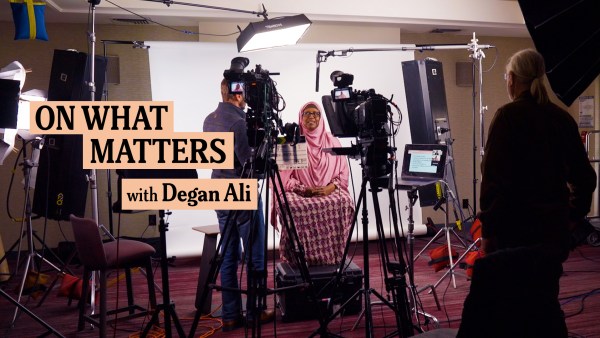
Decolonizing Humanitarian Aid With Degan Ali and Martín Abregú
Degan Ali and Martín Abregú talk about shifting to locally led development and decolonizing aid. Degan shares why we must rethink current structures of providing aid and have local civic society organizations play a stronger and more strategic role in global policy debates.
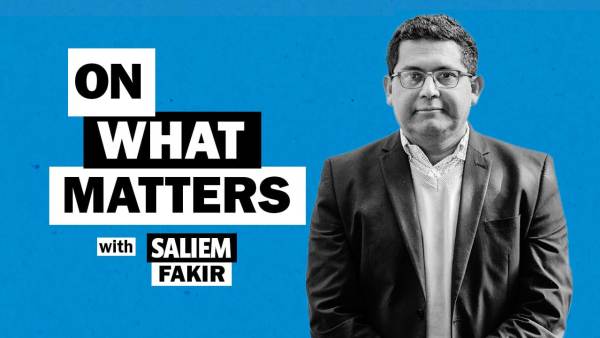
Working Towards a Truly Just Energy Transition with Hilary Pennington and Saliem Fakir
Saliem Fakir, the founder and executive director of the African Climate Foundation, the first grantmaking foundation in Africa focused on furthering solutions for sustainable climate development, joins Hilary Pennington to discuss the urgent need to address climate change and South Africa’s promising Just Energy Transition Partnership.
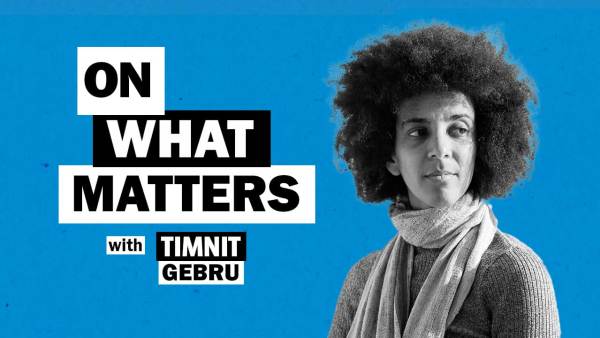
Making AI systems more just with Hilary Pennington and Dr. Timnit Gebru
Dr. Timnit Gebru, founder and executive director of the Distributed Artificial Intelligence Research Institute (DAIR), joins Hilary Pennington to discuss how an inclusive and collaborative approach to creating AI systems can address the uneven benefits and harmful impacts of technology on society.
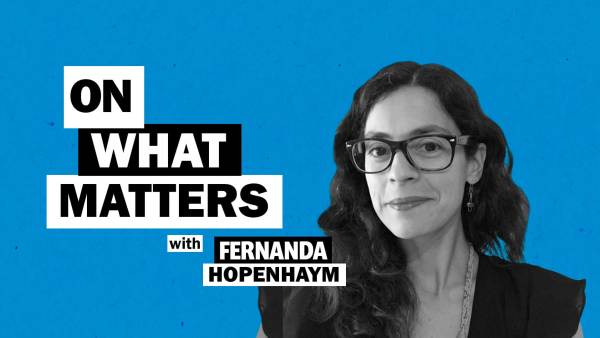
Holding corporations accountable with Hilary Pennington and Fernanda Hopenhaym
Fernanda Hopenhaym is the co-executive director of the Project on Organizing, Development, Education, and Research (PODER), a nonprofit in Latin America that pushes for corporate accountability for human rights and environmental abuses. Fernanda and Hilary discuss how to keep businesses ethical and transparent by using feminist and human rights organizing strategies.
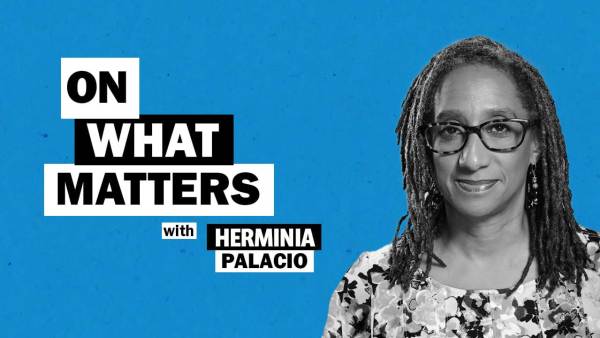
The future of reproductive justice with Hilary Pennington and Dr. Herminia Palacio
Hilary Pennington and Dr. Herminia Palacio discuss this moment in the reproductive justice movement, how different communities are impacted, and what the United States can learn from countries that have won gender and reproductive health victories.
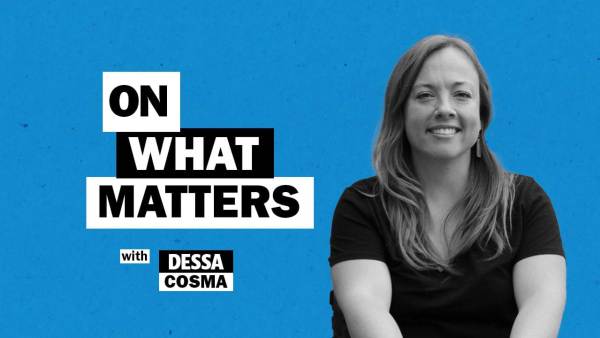
Reimagining how we think about disability with Hilary Pennington and Dessa Cosma
Hilary Pennington talks to Dessa Cosma about disability justice and inclusion. They discuss the importance of using intersectional approaches to activism and how to restructure the economy to be more just for disabled people.
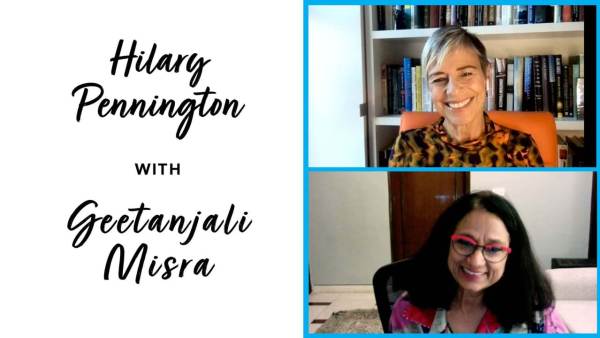
The future of feminism: Hilary Pennington with Geetanjali Misra
Geetanjali Misra has bore witness to the evolution of feminism both on the ground in the U.S. and India and in her work as an activist. Seeing patterns change and movements shift, she speaks about the importance of intersectionality in building a more inclusive feminist future.
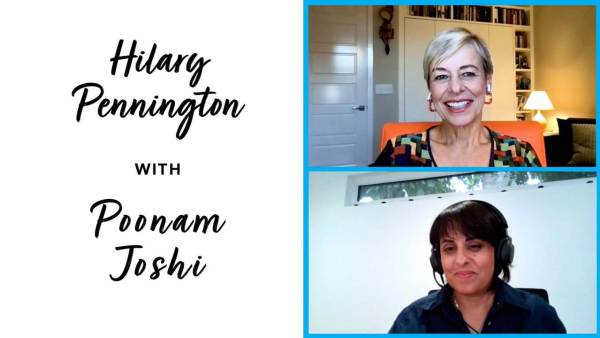
COVID’s impact on civic space: Hilary Pennington with Poonam Joshi
Civic space is essential for democracy. It allows people to participate in society and communicate freely and without discrimination. But, according to Poonam Joshi, director of Funders’ Initiative for Civil Society director, there are threats that need to be addressed before we solidify the civil society we want in the future.

Funding Black feminism: Hilary Pennington with Tynesha McHarris
Black feminist movements are advancing social justice globally. Tynesha Harris, one of the founders of the Black Feminist Fund, aims to channel more support to movement leaders and create a model of true solidarity. Racial, gender, and class injustice need an intersectional approach that acknowledges the inherent value of Black women.
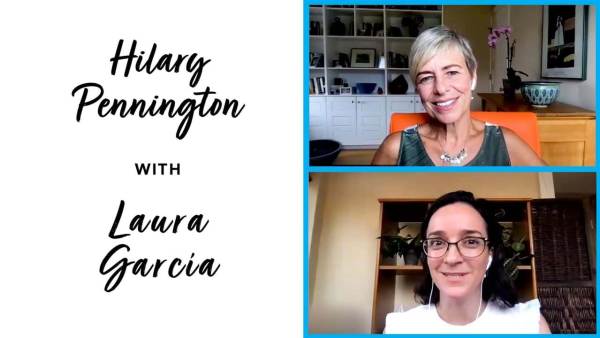
Philanthropy and environmental justice: Hilary Pennington with Laura García
When it comes to climate change, time is running out. But communities all over the world are working on solutions, and philanthropy needs to center their ideas and perspectives to win this fight. Laura Garcia, CEO of GlobalGreen Grants Fund, shares how funding grassroots movements can address challenges at the intersection of social and environmental justice.
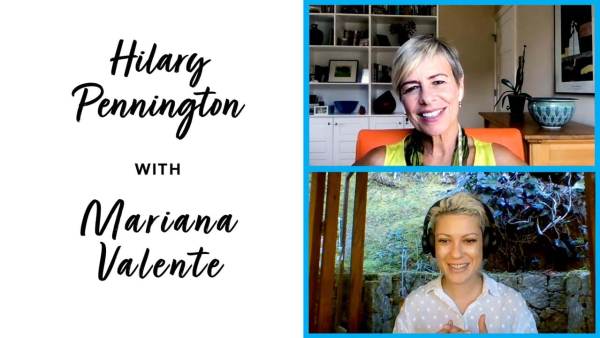
Technology and gender: Hilary Pennington with Mariana Valente
The internet is a force for good, but it must be guided by fundamental human and privacy rights and offer social protection, said InternetLab director Mariana Valente. In this way, technology can advance equality and, with the right policies in place, be used as a tool for advocates to organize.
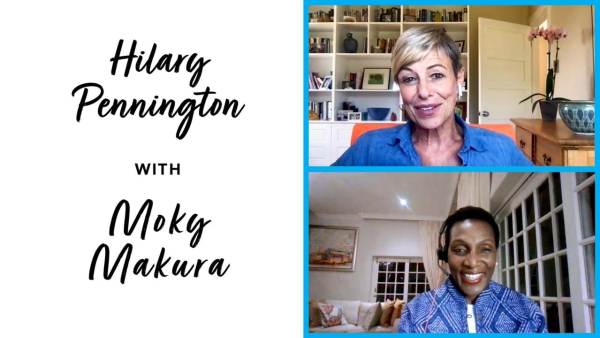
The power of storytelling: Hilary Pennington with Moky Makura
For too long, Africa has been defined in the media by stereotypes and oversimplified narratives. With Ford’s support, Africa No Filter is disrupting these narratives by empowering storytellers helping to create a nuanced, balanced view of the continent and an equitable, inclusive way of how to partner with it.
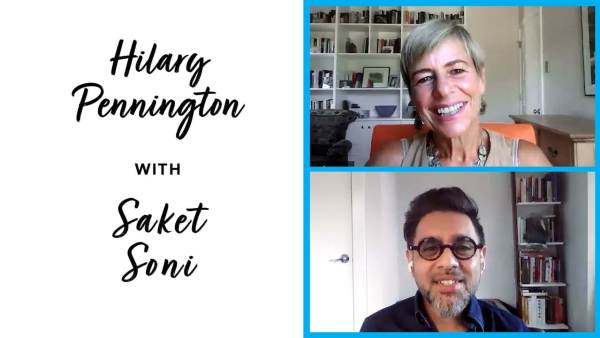
What essential workers need right now: Hilary Pennington with Saket Soni
Disasters present the opportunity to bring us together and give us the chance to reevaluate our priorities and ask what’s really important. Labor organizer Saket Soni sees COVID-19 as a prologue to other threats, like climate change. He says disaster responses need to focus on strengthening essential workers.
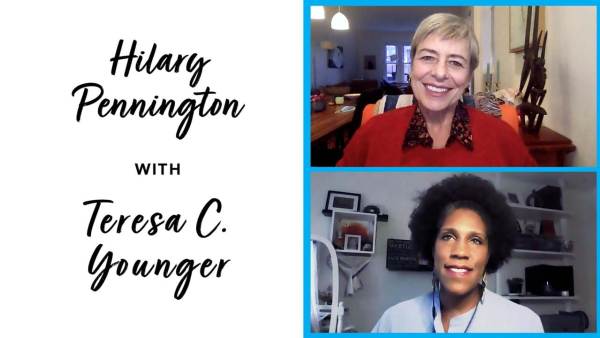
Philanthropy and Black women: Hilary Pennington with Teresa C. Younger
Social justice organizations led by women of color often receive less funding. Teresa C. Younger, CEO of the Ms. Foundation, explains why philanthropy needs to center women of color to address systemic racism and uplift women and girls of color for a more just future.
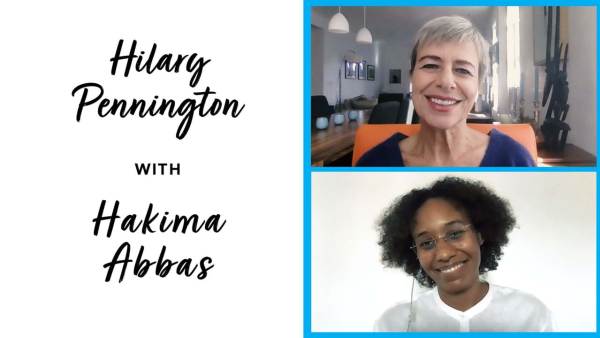
How young feminists are organizing: Hilary Pennington with Hakima Abbas
COVID-19 has impacted the way we work, but it also exacerbated gender inequality in the workplace. Hakima Abbas, of the Association for Women’s Rights in Development, believes we can prevent any further damage by including feminist leaders across the board in devising solutions.
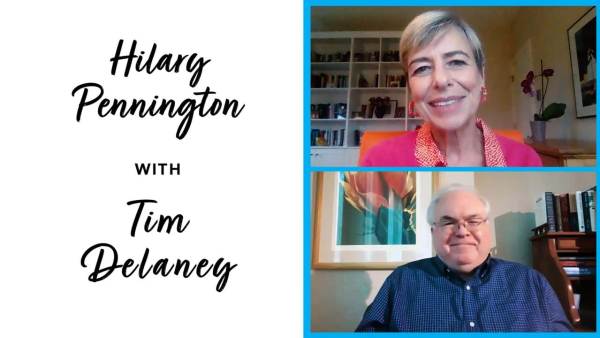
How nonprofits make an impact: Hilary Pennington with Tim Delaney
Over one million nonprofits exist in the United States, but Tim Delaney, the CEO of the National Council of Nonprofits, has an idea to make them even more impactful. To him, bringing social justice groups together can transform philanthropy for the benefit of all.
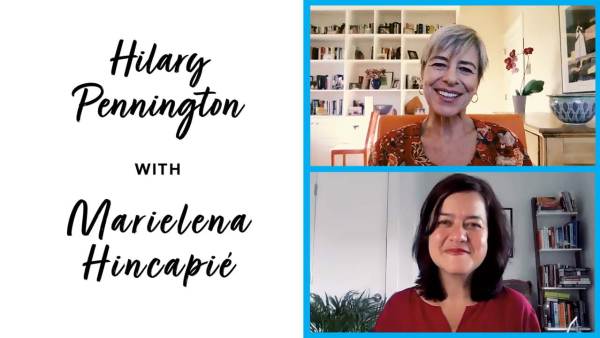
Immigrants are essential: Hilary Pennington with Marielena Hincapié
Immigration has been used as a weapon to divide the United States. The National Immigration Law Center aims to help the country understand that immigrants are not only important members of our communities and essential workers, but they are also valuable political constituencies needed to make American democracy work.
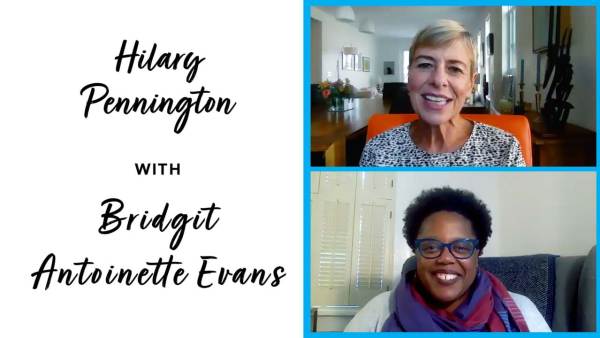
Social justice and pop culture: Hilary Pennington with Bridgit Antoinette Evans
Pop culture plays an important role in advancing social justice. Bridgit Evans of Pop Culture Collaborative produces cultural strategies that build on points of connection to ensure policy changes are not just symbolic. By finding commonalities through culture, she believes we can create a world where everyone feels they belong.
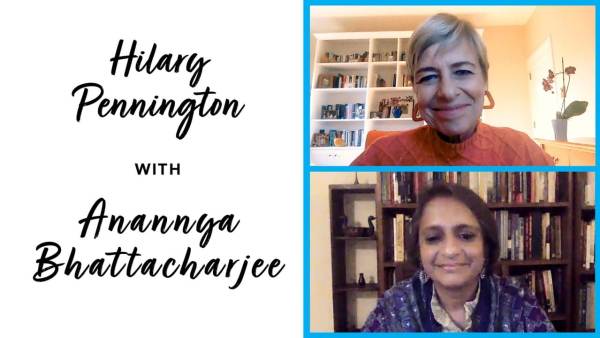
Global work needs to be local: Hilary Pennington with Anannya Bhattacharjee
While the labor movement has worked to improve the lives of garment factory workers globally, activist Anannya Bhattacharjee advocates that solutions need to start locally and come from the ground up to have a significant impact on workers’ lives.
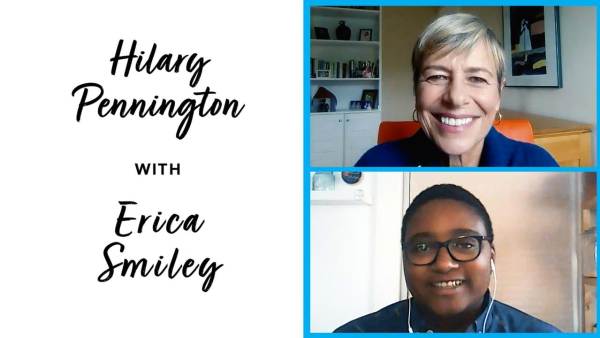
Essential workers are the economy: Hilary Pennington with Erica Smiley
The COVID-19 pandemic has dramatically changed the way we as a world work. As we face this inflection point, Erica Smiley, executive director of Jobs With Justice, believes people—especially essential workers—need to have the right to come together collectively to organize and negotiate their conditions to build a global economy that works for all.
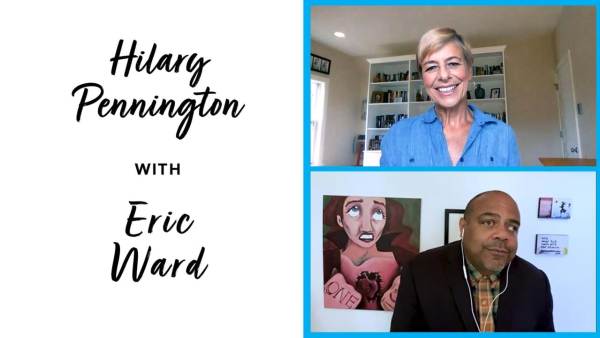
The urgency of this social moment: Hilary Pennington with Eric Ward
We need to dismantle racism to make inclusive democracy truly possible. Eric Ward of Western States Center believes smaller movements can help support bigger waves of change. From creating cohorts of emerging leaders to encouraging small group interactions can help protect democracy and put an end to white supremacy.